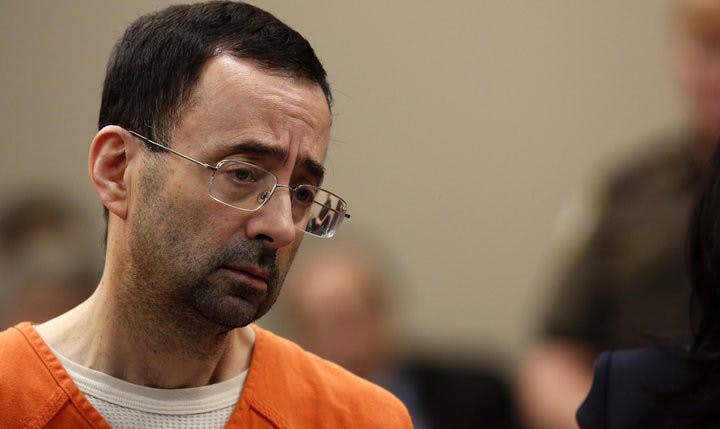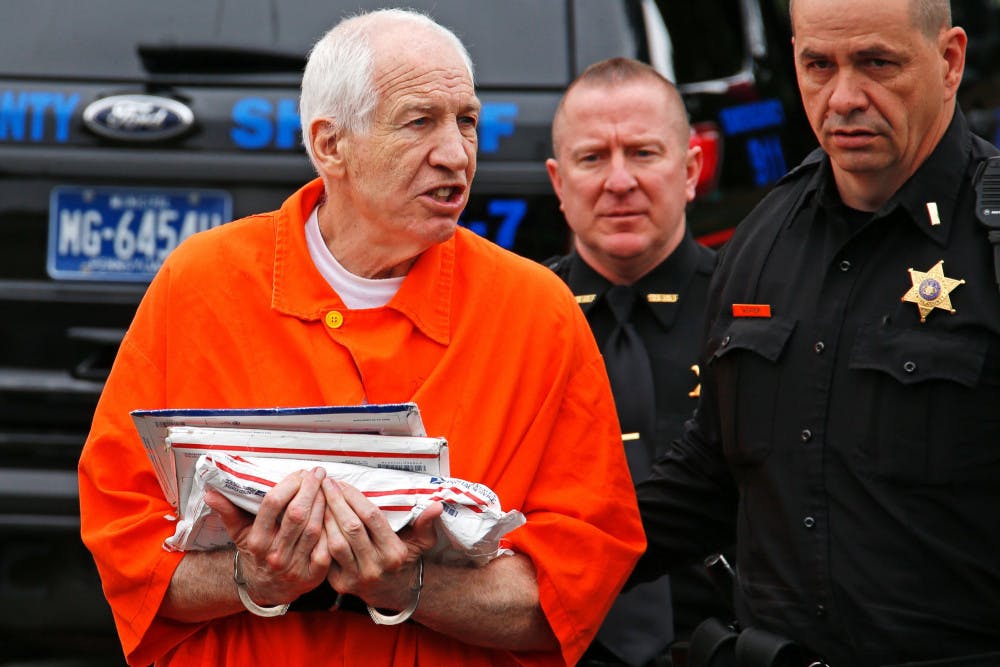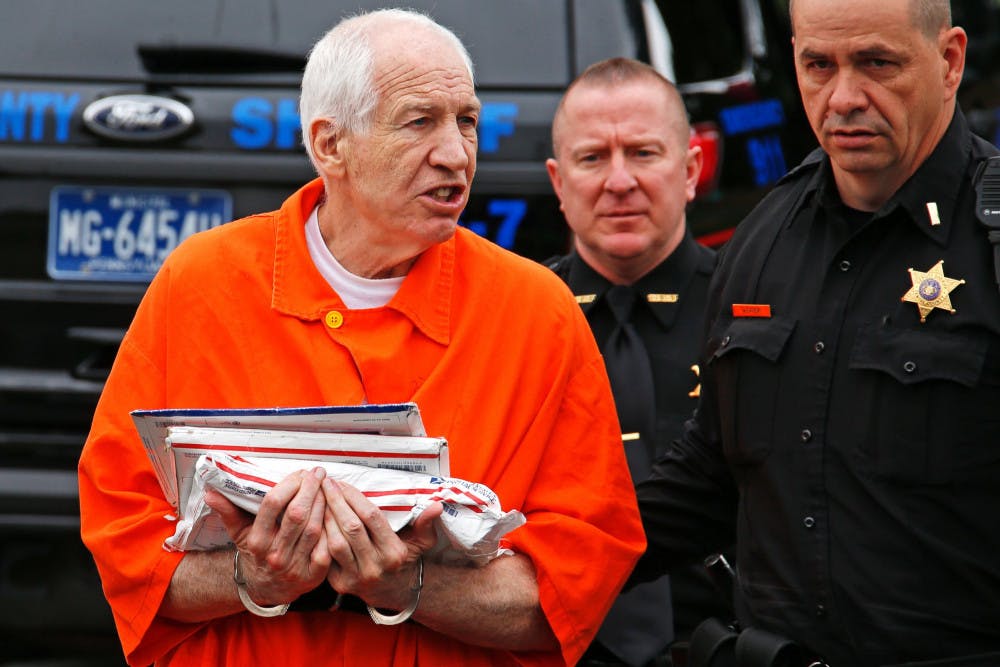Recent sex abuse scandals have inexorably linked Penn State University and Michigan State University under an ominous cloud of national scrutiny. One, involving former Penn State football assistant Jerry Sandusky, spanned 13 years and involved 10 victims. The more recent controversy involved disgraced USA Gymnastics national team doctor and Michigan State University physician Larry Nassar, who sexually abused at least 160 girls and women for more than 20 years.
Sandusky preyed on boys. Nassar preyed on girls. Both relied on a culture of institutional negligence and cover-up to continue their crimes. They were protected by coaches, athletic directors, university presidents, board members and, in the case of Nassar, NCAA President Mark Emmert.
Nassar’s case is still in the midst of falling out as more and more women come forward to tell their stories of abuse at the hands of the former doctor. But, as the reverberations of accusations ring in the nation’s ears, remnants of the abuse that was allowed to persist at Penn State are seen clearly.

In the 264-page report assembled by former FBI director Louis Freeh, details of the timeline of events show how many powerful people need to fail in their positions in order for the abuse of children to endure.
One of the most damning findings of the report took down Penn State’s four most prominent figures in one sweep: “Four of the most powerful people at The Pennsylvania State University—President Graham B. Sapanier, Senior Vice President-Finance Gary C. Schultz, Athletic Director Timothy M. Curley and Head Football Coach Joseph V. Paterno—failed to protect against a child sexual predator harming children for over a decade. They displayed a strong lack of empathy for Sandusky’s victims …”
The report concluded that the four of them knew as early as 1998 about the abuse but “took no action to limit Sandusky’s access to Penn State facilities or took any measures to protect children on their campuses.”
That sounded too familiar as details of Nassar’s abuse at Michigan State were being uncovered. Several of the women who testified against Nassar said they reported the abuse to university authorities, including trusted trainers and coaches.
A Detroit News investigation found that at least 14 Michigan State representatives received reports of sexual misconduct by Nassar over the span of 20 years leading up to his arrest.
The similarities to negligence perpetrated by authorities at Penn State are striking. According to a court testimony in 2014, an accuser identified as John Doe 150 said he sought out Paterno to tell him about abuse from Sandusky.

“Is it accurate that Coach Paterno quickly said to you, ‘I don’t want to hear about any of the kind of stuff, I have a football season to worry about?’” a lawyer asked the accuser.
“Specifically, yes,” the man replied.
If it’s possible, the Michigan State scandal is moving in a direction to take down even more powerful figures within the university. Athletic Director Mark Hollis stepped down under pressure on Jan. 26. Two days prior, president Lou Anna Simon resigned on Jan. 24 because of what she described as outside pressure. She insisted in her resignation letter that there was no “cover-up.”
But the scandal reportedly reaches all the way up to NCAA President Mark Emmert. The Athletic’s Nicole Auerbach reported that Emmert was alerted to sexual assault accusations at Michigan State in 2010. The Division I Board of Governors, which at the time included Simon, was reportedly alerted at the same time.
Michigan State has acknowledged some process failures but has denied a deliberate cover-up. It’s still too soon to draw direct and permanent links between Michigan State and Penn State, though the similarities between the two are unmistakable. The NCAA has opened an investigation on Michigan State, and its findings could serve to add more to these connecting chains than what already exists
How Institutional Negligence Bred Years of Abuse at Penn State and Michigan State

Heads up! This article was imported from a previous version of The Campus Citizen. If you notice any issues, please let us know.
Disgraced doctor Larry Nassar at his sentencing in Michigan. (Photo from The Huffington Post)
Jerry Sandusky (Photo from Associated Press)




